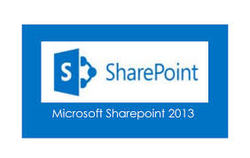
Cross-Site Publishing
SharePoint 2013 has cross-site publishing. In the previous versions of SharePoint, it was not possible to easily share content across sites. Using cross-site publishing, users can separate authoring and publishing into different site collections: authored content goes into an indexable "catalog", and you can then use FAST to index and deliver dynamic content on a loosely coupled front end.
This feature is required for services like personalization, localization, metadata-driven topic pages, etc. An example of its use is a product catalog in an e-commerce environment. It can be used more generally for all dynamic content. Note that cross-site publishing is not available in SharePoint Online.
Here is how it works. First, you designate a list or a library as a "catalog". FAST then indexes that content and makes it available to publishing site collections via a new content search web part (CSWP). There are few good features put into creating and customizing CSWP instances, including some browser-based configurations. Run-time queries should execute faster against the FAST index than against a SharePoint database.
Cross-site publishing feature could significantly improve your content reuse capabilities by enabling you to publish to multiple site collections.
Templates
Creating templates still begins with a master page which is an ASP.NET construction that defines the basic page structure such as headers and footers, navigation, logos, search box, etc. In previous versions, master pages tended to contain a lot of parts by default, and branding a SharePoint publishing site was somewhat tricky.
SharePoint 2013 has new Design Manager module, which is essentially a WYSIWYG master page/page layout builder. Design Manager is essentially an ASP.NET and JavaScript code generator. You upload HTML and CSS files that you create and preview offline. After you add more components in the UI (for example, specialized web parts), Design Manager generates the associated master page. Page layouts get converted to SharePoint specific JavaScript that the platform uses to render the dynamic components on the page.
You can generate and propagate a design package to reuse designs across site collections. There are template snippets that enable you to apply layouts within a design package, but they are not reusable across design packages.
This process is more straight forward than the previous versions, but it still would likely involve a developer.
Contributing Content
SharePoint 2013 enables contributors to add more complex, non-web part elements like embedded code and video that does not have to be based on a specific web part. This feature is called "embed code". Note that if you are using cross-site publishing with its search based delivery, widget behavior may be tricky and could require IT support.
With respect to digital asset management, SharePoint has had the ability to store digital assets. However, once you got past uploading a FLV or PNG file, there was scant recourse to leverage it. SharePoint 2013 brings a new video content type, with automatic and manual thumbnailing.
Creating image renditions capability has also improved. It allows you to contribute a full fidelity image to a library, and then render a derivative of that image when served through a web page.
Other added features include better mobile detection/mobile site development and an improved editing experience.
Metadata and Tagging Services
SharePoint 2013 has solid metadata and tagging services with improved and simplified the term store. However, there is still no versioning, version control or workflow for terms.
Big improvement is that using FAST, you can leverage metadata in the delivery environment much more readily than you could in previous versions. You can use metadata-based navigation structures (as opposed to folder hierarchies), and deploy automated, category pages and link lists based on how items are tagged.
 RSS Feed
RSS Feed
